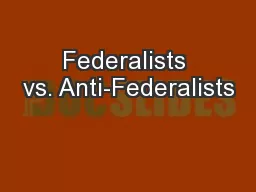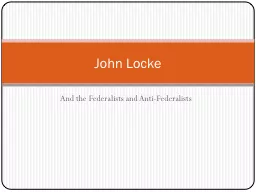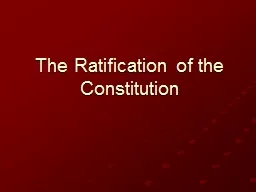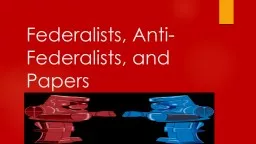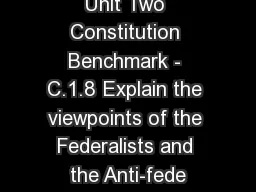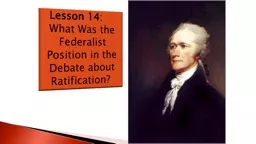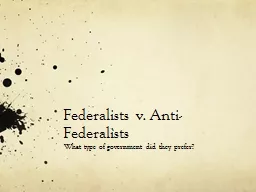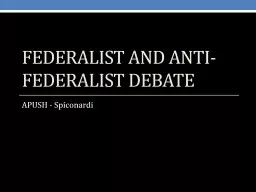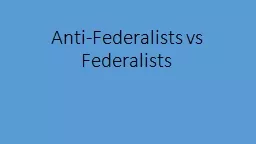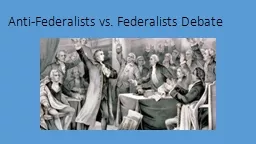PPT-Federalists vs. Anti-Federalists
Author : conchita-marotz | Published Date : 2018-02-22
Ratification A Showdown Awaits For ratification nine state conventions needed to approve the document After the convention the Constitution was distributed widely
Presentation Embed Code
Download Presentation
Download Presentation The PPT/PDF document "Federalists vs. Anti-Federalists" is the property of its rightful owner. Permission is granted to download and print the materials on this website for personal, non-commercial use only, and to display it on your personal computer provided you do not modify the materials and that you retain all copyright notices contained in the materials. By downloading content from our website, you accept the terms of this agreement.
Federalists vs. Anti-Federalists: Transcript
Download Rules Of Document
"Federalists vs. Anti-Federalists"The content belongs to its owner. You may download and print it for personal use, without modification, and keep all copyright notices. By downloading, you agree to these terms.
Related Documents

